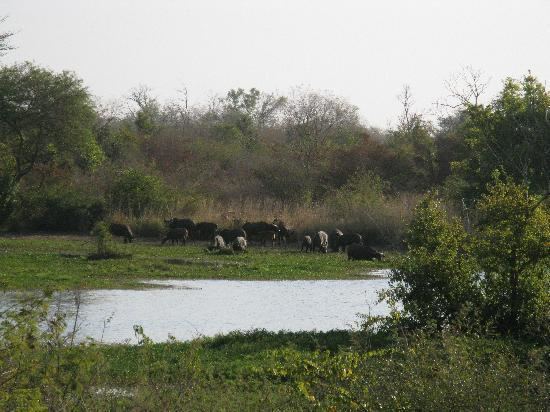Type Natural Designated 1996 (20th session) | Criteria vii, ix, x Area 10,000 km² Established August 4, 1954 | |
 | ||
Nearest cities Kandi, Benin (Benin), Diapaga (Burkina), La Tapoa (Niger) Similar Pendjari National Park, Arli National Park, Aïr Mountains, Aïr and Ténéré National, Royal Palaces of Abomey | ||
The W National Park or W Regional Park (French: "W" du Niger) is a major national park in West Africa around a meander in the River Niger shaped like a "W". The park includes areas of the three countries Niger, Benin and Burkina Faso, and is governed by the three governments. Until 2008, the implementation of a regional management was supported by the EU-funded Project ECOPAS (French: Ecosystèmes Protégés en Afrique Soudano-Sahélienne). The three national parks operate under the name W Transborder Park (French: Parc Regional W).
Contents

Creation

The W National Park of Niger was created by decree on 4 August 1954, and since 1996 has been listed as a UNESCO World Heritage Site. Within Niger, the Park is listed as a National Park, IUCN Type II, and is part of a larger complex of Reserves and protected areas. These include the adjacent Dallol Bosso (Wetlands of International Importance (Ramsar) on the eastern bank of the Niger River and the partial overlap of the smaller "Parc national du W" (Wetlands of International Importance (Ramsar). The three parks are BirdLife International Important Bird Areas (IBAs)of types A1 and A3 (IBA codes IBA NE001, IBA BF008, and IBA BJ001).
Geography

In the three nations, the Regional park covers some 10,000 km² largely uninhabited by humans, having been until the 1970s a Malarial zone of wetlands formed by the delta of the Mekrou River with the Niger, broken by rocky hills. Historically, the area has been at one time a major area of human habitation, judged by the important archaeological sites (mostly tombs) found in the area.
Flora
The parc also constitute the southern limit of tiger bush plateaus distribution in Niger.
Fauna

The park is known for its large mammals, including aardvarks, baboons, buffalo, caracal, cheetahs, bush elephants, hippopotami, African leopards, West African lions, serval and warthogs. The park provides a home for some of West Africa's last wild African elephants. However, the rare West African giraffes, today restricted to small parts of the Niger, is absent from the park. The W Park is also known for historic occurrence of packs of the endangered West African wild dogs, although this canid may now be extirpated from the area. The National Park is one of the last strongholds for the Northwest African cheetah. There is a small but apparently increasing population of at least 15-25 animals of this rare cat in the park. The W area is also known for its bird populations, especially transitory migrating species, with over 350 species identified in the park. The park has been identified by BirdLife International as an Important Bird Area.
Literature


